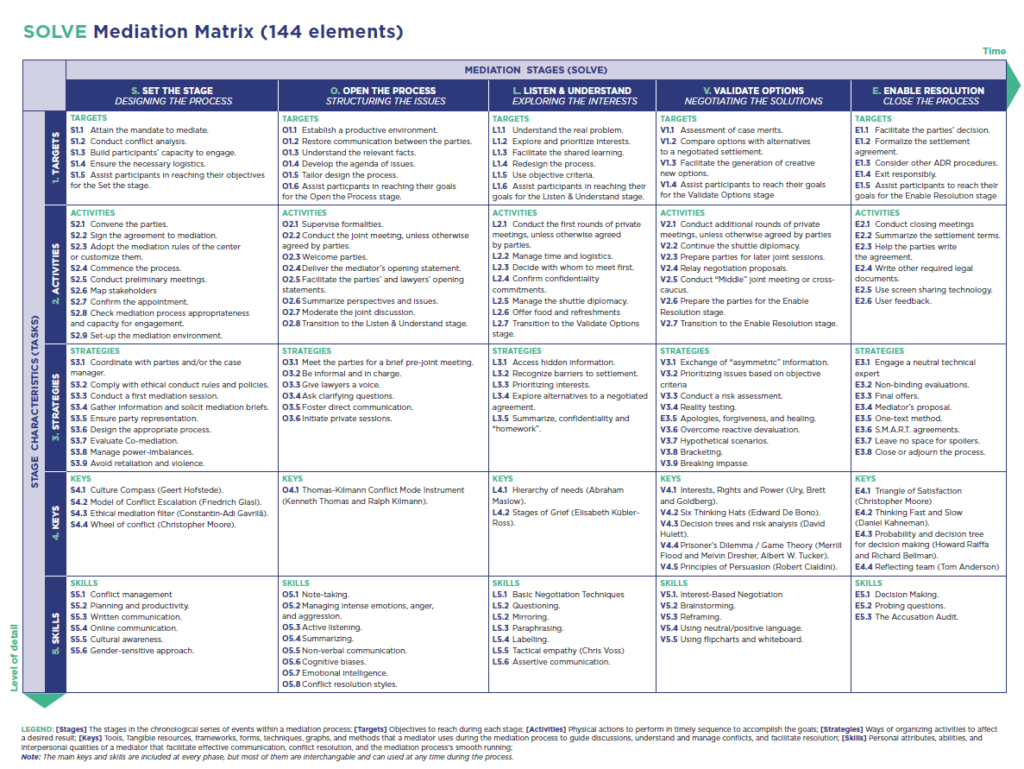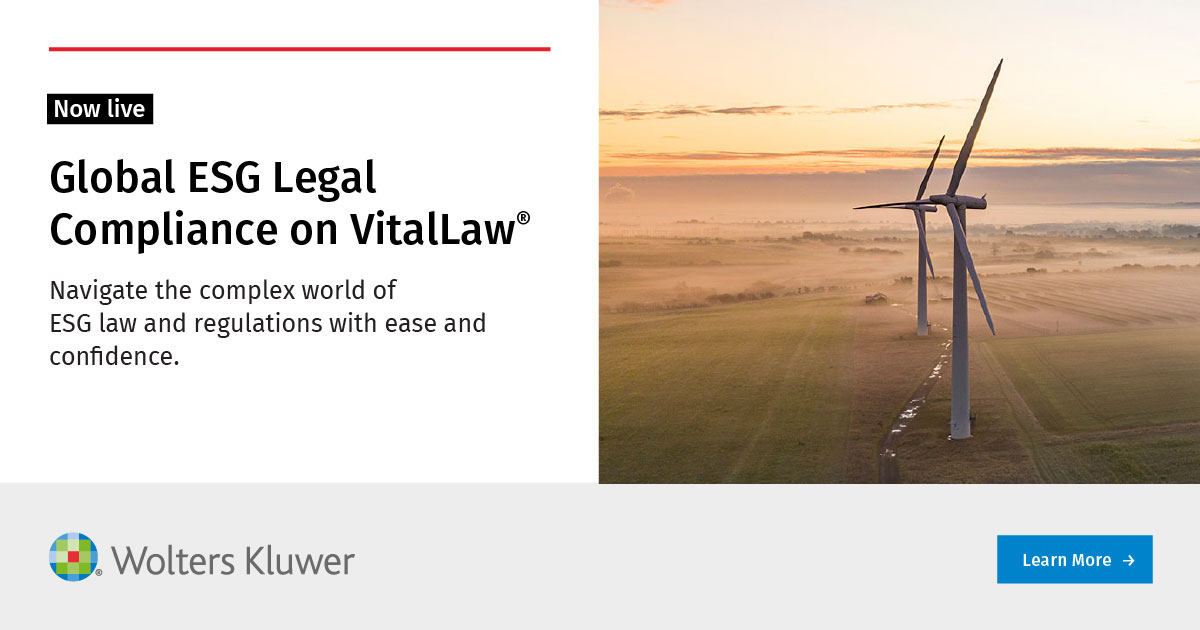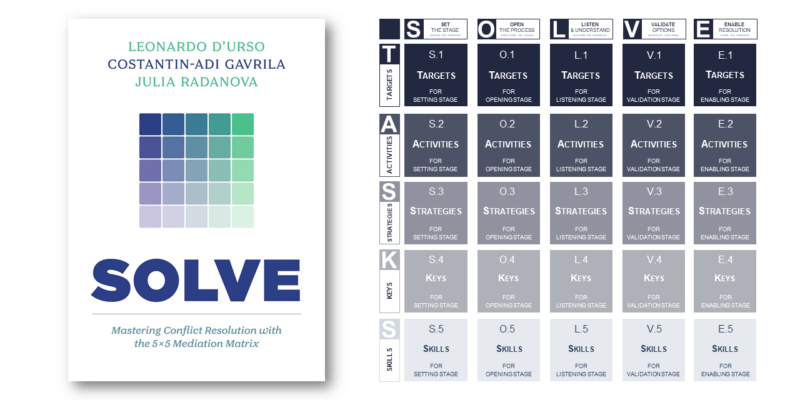This post was drafted by Leonardo D’Urso, Constantin Adi Gavrila and Julia Radanova.
In a world where conflict is increasingly complex and the stakes ever higher, the need for a clear, adaptable approach to mediation has never been more important. If the world has seen unprecedented changes in the last one hundred years in demographics, travel and communication, the pace of changes in the last few years – from Covid-19 to Artificial Intelligence, has been beyond anything experienced.
When mediators compare notes at conferences, there is often a shared confession: my interventions are partly intuition, partly habit, and only occasionally informed by a structured checklist. Over the past decade, a number of frameworks have tried to bring more discipline to that intuition. A recent contribution is SOLVE: Mastering Conflict Resolution with the SOLVE Mediation Matrix by Leonardo D’Urso, Constantin-Adi Gavrilă and Julia Radanova.
The SOLVE Mediation Matrix is built on more than 25 years of mediation practice and tens of thousands of cases. It is a practical guide for professionals, including mediators, lawyers, judges, managers, HR experts, students, and anyone interested in effectively managing conflict and improving their resolution skills. It provides a comprehensive framework for navigating conflicts, difficult conversations, and tough decisions, offering specific techniques and strategies for achieving constructive outcomes. In a nutshell, from practice to theory and then right back to practice.
At the heart of the book is the SOLVE Matrix, which represents a mediation methodology of 5 steps (SOLVE):
1. Set the Stage: This represents the groundwork for mediation, including identifying the actors who should be involved, their views on the situation, understanding goals and expectations, clarifying roles, and agreeing on the conditions for dialogue.
2. Open the Process: The parties and the mediator usually come together to confirm the agreement to start the mediation process. The parties then articulate their perspectives while trying to restore communication, and the mediator helps them define the topics for conversation.
3. Listen & Understand: where the mediator engages deeply with each party, often in private sessions, to understand their underlying needs and interests, gathering sensitive information and ranking interests to inform the subsequent negotiations.
4. Validate Options – when potential solutions are generated, discussed and validated against a set of agreed criteria, while ensuring that all parties are satisfied that their top interests are represented.
5. Enable Resolution – when agreements are finalized and formalized, and the process concludes with clarity and mutual understanding, facilitating closure for all parties involved.
For each step, the Matrix offers over 140 elements, grouped into five categories (TASKS):
1. Targets: Clear objectives for what needs to be achieved in each stage by the mediators and participants.
2. Activities: Specific actions or steps that mediators and participants could undertake to accomplish the targets.
3. Strategies: Approaches that may be employed to effectively navigate each stage and perform the activities mentioned above.
4. Keys: Tangible resources, frameworks, forms, techniques, graphs and methods that assist in effectively implementing the strategies.
5. Skills: The personal competencies and abilities required to facilitate the mediation process successfully.
The 144 elements are not meant as a rigid checklist. Instead, the SOLVE Matrix is a flexible framework that adapts to different cases, sectors, mediation styles, and jurisdictions.

Why did we create this framework?
The reason for developing such a mediation framework is because modern practice has diversified faster than its conceptual foundations. Online platforms, restorative programmes, workplace schemes, and mandatory mediation, among others, have produced a patchwork of “scattered toolkits,” making it difficult to explain why a given intervention is used in a particular case. The SOLVE Matrix brings this scattered knowledge into one clear, teachable, and adaptable grid. It offers a common language for mediators—simple enough for training, yet flexible enough across sectors, types of cases, jurisdictions or mediation styles. It offers a common framework without prescribing one style.
Adaptability is essential
Every staged model risks becoming too rigid. The SOLVE Matrix is not just about what and how to do mediation, but—crucially—about why. It connects the goals of mediation with the activities and strategies needed to achieve them, all within a flexible structure.
In real cases, the process is rarely linear. For example, a private session during Listen & Understand may reveal new facts, requiring another round of Open the Process. Still, having a flexible map helps mediators and parties avoid skipping vital steps, like jumping to numbers before clarifying non-monetary interests, thus protecting the process’s efficiency. Also, by following the same roadmap, it is easier for mediators and advisors to discuss and agree on the process, therefore limiting the risk of confusing the parties regarding the approach.
The SOLVE Matrix has many possible practical uses:
• As a self-audit tool, practitioners can note which squares they routinely cover and which they neglect, turning the gaps into learning goals;
• As a client-preparation template, counsel can reverse-engineer the grid to brief parties on the Activities and Keys likely to surface in each phase and the information they should assemble;
• As a curriculum-design aid, trainers can map course modules onto the 25 squares to balance process, substance, and skill;
• In online mediation workflows, the Activities column can feed directly into platform checklists or automated prompts, supplying the explicit structure that virtual sessions require.
A fill-in Canvas accompanies the Matrix to support any of these applications. Practitioners are invited to treat the SOLVE Mediation Matrix as a living document—one they can annotate, adapt, and rearrange as new techniques emerge.
SOLVE is neither a silver bullet nor entirely new. Its value lies in organizing what mediators already do in a clear, teachable format. Whether the community adopts the full grid, extracts preferred slices, or uses it mainly as a reflective mirror will depend on individual style and context. One key takeaway is less about adopting each square than about asking better meta-questions: Which stage are we at, and what is the current Target? What can we do to align our Actions and Strategies? If the SOLVE Matrix helps prompt those questions, it will have served a useful purpose.
SOLVE: Mastering Conflict Resolution with the SOLVE Mediation Matrix is available at https://www.amazon.it/SOLVE-Mastering-Conflict-Resolution-Mediation/dp/B0F2GVN8RY/
________________________
To make sure you do not miss out on regular updates from the Kluwer Mediation Blog, please subscribe here.




Editorial Comment – Kluwer Mediation Blog
In response to “Mapping Mediation: A Practitioner’s Guide to the SOLVE Mediation Matrix” by Constantin-Adi Gavrilă, Leonardo D’Urso and Julia Radanova
Thank you to Constantin-Adi, Leonardo, and Julia for this compelling contribution—and for offering the mediation community a structured yet flexible tool in the form of the SOLVE Mediation Matrix.
What stands out in your approach is the clarity it brings to what is often an intuitive and fluid process. By breaking down mediation into five core stages—Set the Stage, Open the Process, Listen & Understand, Validate Options, Enable Resolution—and pairing these with actionable components across Targets, Activities, Strategies, Keys, and Skills, the SOLVE Matrix provides a practical scaffolding that is both teachable and adaptable.
In an increasingly fragmented field, where mediation spans everything from workplace conflict to investor-state disputes, SOLVE offers the potential for a shared vocabulary and planning tool that respects diversity in style and sector. It doesn’t mandate a single way of mediating, but it supports mediators and advisors in staying intentional about what they are doing, why, and when.
We particularly appreciate the focus on adaptability. Real-world mediations rarely unfold linearly. The ability to loop back, pivot, and recalibrate without losing coherence in the process is what distinguishes effective practice. The SOLVE framework’s design seems to embrace this reality, without sacrificing structure.
As the mediation field continues to professionalize across jurisdictions and cultures, the need for frameworks that support training, quality assurance, and process clarity has never been more pressing. Tools like SOLVE can help bridge the gap between instinctive practice and reflective discipline.
We invite our readers to reflect on the following questions:
1. How might a structured yet adaptable framework like the SOLVE Matrix support or enhance your current mediation or advisory practice?
2. Have you used a comparable structure in your own work—and if so, what results or challenges have emerged?
3. Can you share examples of mediation settings—court-annexed, commercial, community, or international—where a matrix like SOLVE could have improved process clarity or party engagement?
We look forward to your experiences and thoughts on how such models can help shape the next chapter in mediation’s evolution.
— Kluwer Mediation Blog Editorial Team
Thank you very much for your insightful and encouraging reflections on the SOLVE Mediation Matrix. We truly appreciate the editorial team’s recognition of the balance we sought to achieve between structure and flexibility in what is often a highly intuitive practice.
Indeed, SOLVE is mostly about the structure. The content will develop organically and differently, depending on factors such as culture, jurisdiction, sector, and personal style.
We look forward to engaging with the community’s responses to the questions you have posed, and to continuing the conversation. Hopefully, it will lead to more understanding and respect for mediation.
Heartiest congratulations to Leonardo D’Urso, Constantin Adi Gavrila and Julia Radanova on publishing such a fantastic work on mediation. It is indeed fascinating to have 144 elements classified into five categories that can serve as useful checklists for mediators. It is a comprehensive, holistic and eclectic method to develop an effective and efficient dispute resolution strategy, especially mediation. As the world veers towards mediation and the landscape of mediation phenomenally expands, it is natural and logical to expect that mediators too broaden and deepen their understanding of myriad issues at hand. Pre-litigation mediation, cross-border mediation, hybrid dispute resolution clauses such as mediation-arbitration-mediation or arbitration-mediation-arbitration, IPR disputes, sports, commercial, family, employment, civil, property are among the few types of constantly burgeoning mediation kinds depending upon the matters, number of and locations of parties . Online dispute resolution and use of AI are invaluable additions to the existing corpus on mediation. One hopes the mediation stakeholders – parties, mediators, lawyers, dispute resolution practitioners, researchers, scholars and practitioners – will find the SOLVE Matrix’s over 140 elements and five TASK categories immensely helpful in enriching the universe of mediation.
Thank you very much, Dr. Kishor Shankar Dere, for your generous and insightful comments. We are glad that the SOLVE Matrix resonates with you. We hope that SOLVE will become a practical tool that supports mediators and all stakeholders in navigating the growing complexity and diversity of mediation practice. Your recognition means a lot to us.